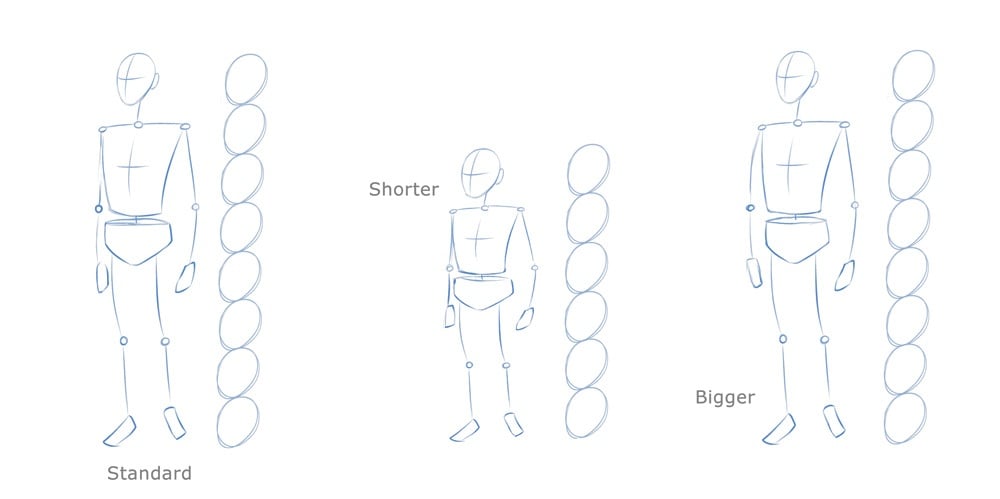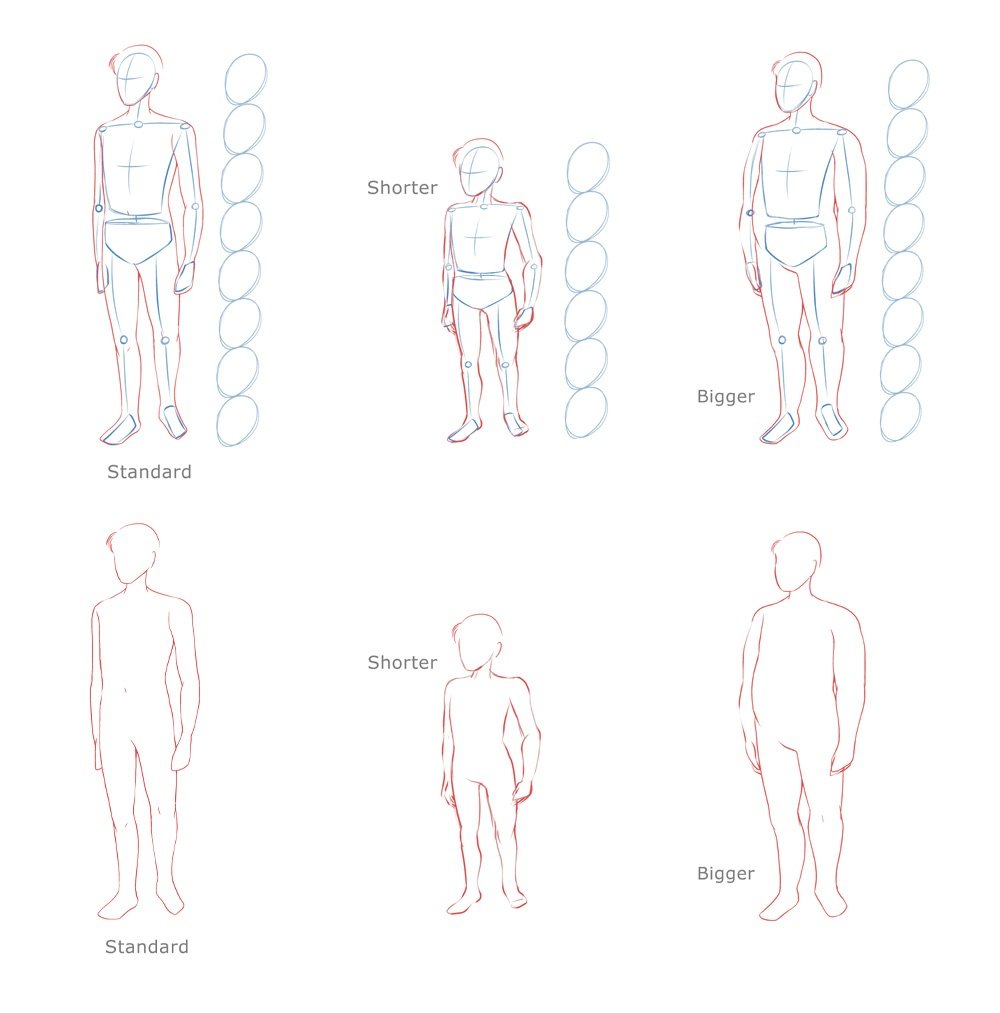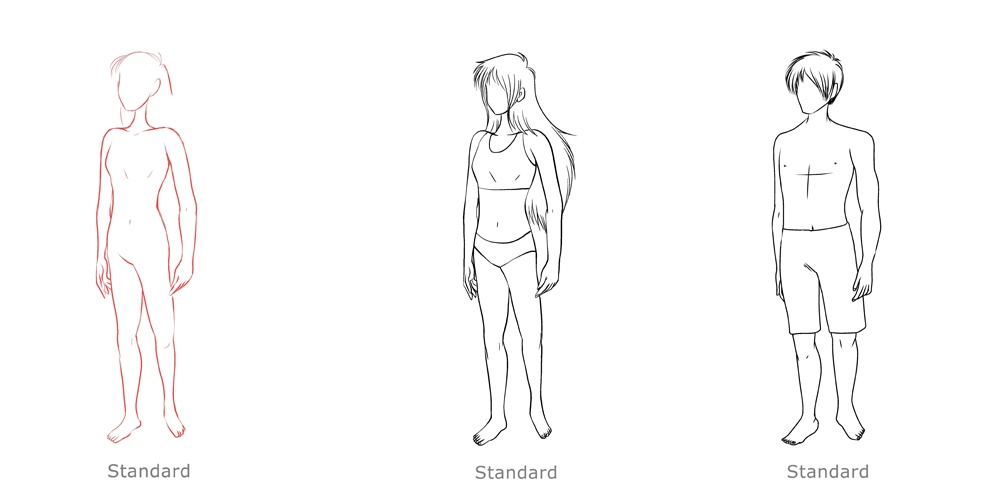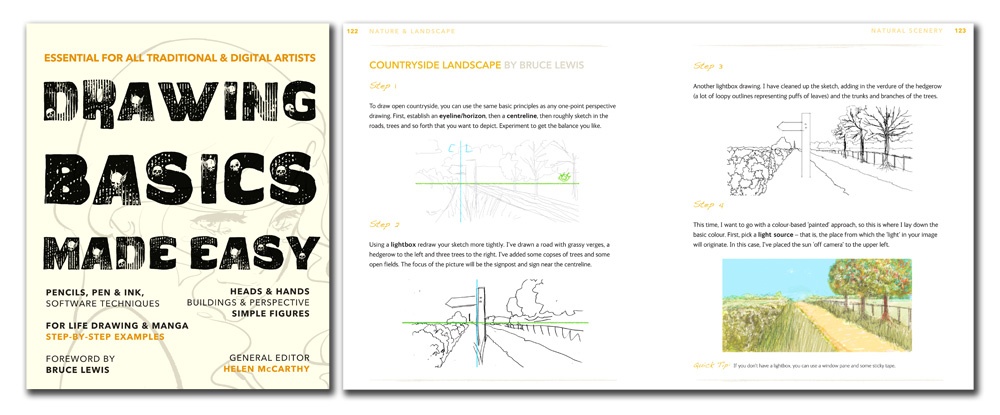As bodies grow and age, they change, but the basic rules of drawing stay the same. Break it down into simple shapes. And, remember, you don’t have to draw from the nude – careful observation can help you make accurate figure drawings in or out of clothes.
Body Proportions and Weight
by Laura Watton-Davies
Step 1
The circles next to these figures show the dimensions of the head of the subject. An average main character in a comic book is about eight-heads tall proportionally. An adult character who is not as tall could be six- to seven-heads tall. For a drawing from life, observe how many head lengths make up the body.

The rough pencil stage helps with the volume and proportion of your subject’s stance. Think if they will be standing, bending, posing. Draw as many steps as you think you need and select the most appropriate one, as this is your foundation.
Step 2
Over the stick figure skeleton, drawing a rough body shape will help assist to bring your subjects and their personality to life. This is the stage where adding weight and creases to the skin structure is a good idea, as you can go over these elements in better detail later.
Step 3
Removing the stick figure base will help give you a good sense of what needs editing or cleaning up. If you are unhappy at this stage, feel free to start again – there is no harm doing this and you can learn from your past sketches to see what will work better.

Step 4
At this stage you can tidy up the body type – perhaps emphasize or refine certain elements such as shoulders or muscle silhouettes to give your subject a bolder outline and sense of presence.
The inking stage is the cleanest and most fluid stage. As you can see, the muscular person has wider shoulders and stronger muscle tone than a slender person. An elderly figure may not be very tall and will have more skin fold detail due to their age.
Step 6
The pencil lines have now been inked and the final stage shows the subject’s stance and body type. Clothes can be added using similar stages, and thinking about how different fabrics would sit and hang from each body type should be considered and experimented with.

This is just a tiny snippet from our new book Drawing Basics Made Easy. It covers all the basics, such as seen here, as well as more advanced tenchniques for scenery, vehicles, and much more. Take a closer look at the title here.




